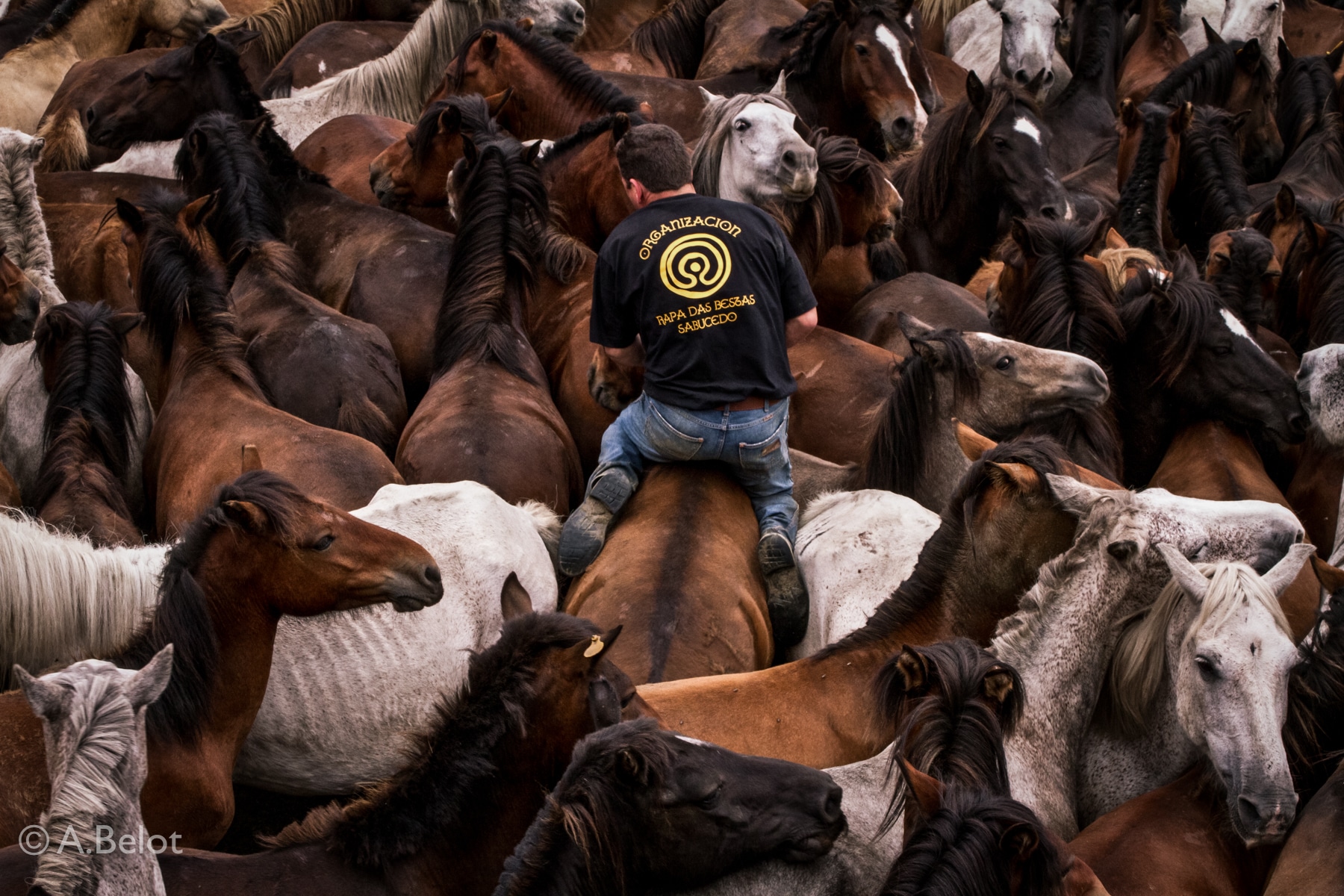Development of the Festival: Step by Step

The Ascent to the Mountain and the Search for the Mares.
The Rapa festival begins early in the morning with fireworks and the ringing of bells. After a morning mass where protection is requested for the animals, the residents of Sabucedo and visitors head towards the mountains.
Once on the mountain, people divide into groups to locate the herds of wild horses (“grea”) and slowly surround them. Finally, the herds gather at a central point called “O Peón,” and once the people have rested, the horses are guided toward the village.
The return of the “bestas” to Sabucedo is a culminating moment where an encounter takes place between the young people, who have actively participated in the roundup, and the elderly. This act is seen as a moment of reaffirmation of the village’s identity and an opportunity for the elders to pass on their knowledge to the younger generations. Before the struggle in the Curro, the bestas remain in an enclosure to rest.
The Verbena and Music of the Rapa
It’s one of the most spectacular moments. Hundreds of people on foot and on horseback coordinate to gather the scattered herds and guide them in a thrilling descent to the village.
The Curro: The Moment of Truth (Saturday, Sunday, and Monday)
The Rapa’s nights are a popular festival in the “Carballeira do Campo do Medio,” with verbenas enlivened by the best orchestras and traditional music groups.
In addition to the orchestras, the Rapa offers Galician folk and traditional music, with performances by well-known artists and groups that liven up the wait in the Curro. The celebrations begin on Saturday morning with the sound of bagpipers in the village streets and culminate with the music of the bagpipes in the Curro in the afternoon. The festival grounds have bars and food stalls to enjoy the complete experience.




